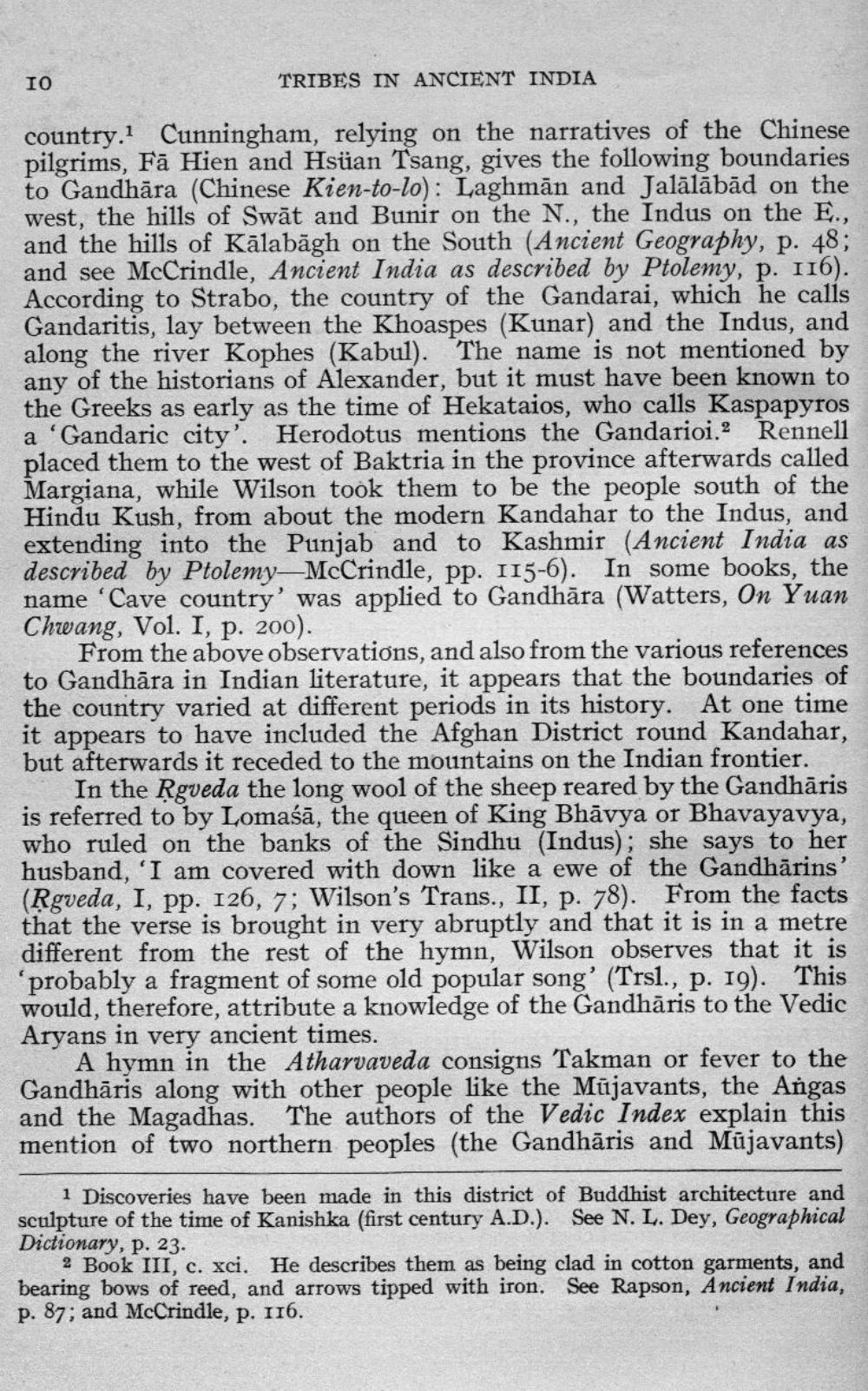________________
TRIBES IN ANCIENT INDIA
country. Cunningham, relying on the narratives of the Chinese pilgrims, Fa Hien and Hsüan Tsang, gives the following boundaries to Gandhara (Chinese Kien-to-lo): Laghman and Jalālābād on the west, the hills of Swat and Bunir on the N., the Indus on the E., and the hills of Kalabagh on the South (Ancient Geography, p. 48; and see McCrindle, Ancient India as described by Ptolemy, p. 116). According to Strabo, the country of the Gandarai, which he calls Gandaritis, lay between the Khoaspes (Kunar) and the Indus, and along the river Kophes (Kabul). The name is not mentioned by any of the historians of Alexander, but it must have been known to the Greeks as early as the time of Hekataios, who calls Kaspapyros a 'Gandaric city'. Herodotus mentions the Gandarioi.2 Rennell placed them to the west of Baktria in the province afterwards called Margiana, while Wilson took them to be the people south of the Hindu Kush, from about the modern Kandahar to the Indus, and extending into the Punjab and to Kashmir (Ancient India as described by Ptolemy-McCrindle, pp. 115-6). In some books, the name 'Cave country' was applied to Gandhara (Watters, On Yuan Chwang, Vol. I, p. 200).
From the above observations, and also from the various references to Gandhara in Indian literature, it appears that the boundaries of the country varied at different periods in its history. At one time it appears to have included the Afghan District round Kandahar, but afterwards it receded to the mountains on the Indian frontier.
IO
In the Rgveda the long wool of the sheep reared by the Gandhāris is referred to by Lomasa, the queen of King Bhavya or Bhavayavya, who ruled on the banks of the Sindhu (Indus); she says to her husband, 'I am covered with down like a ewe of the Gandharins' (Rgveda, I, pp. 126, 7; Wilson's Trans., II, p. 78). From the facts that the verse is brought in very abruptly and that it is in a metre different from the rest of the hymn, Wilson observes that it is 'probably a fragment of some old popular song' (Trsl., p. 19). This would, therefore, attribute a knowledge of the Gandhāris to the Vedic Aryans in very ancient times.
A hymn in the Atharvaveda consigns Takman or fever to the Gandhāris along with other people like the Mujavants, the Angas and the Magadhas. The authors of the Vedic Index explain this mention of two northern peoples (the Gandhāris and Mujavants)
1 Discoveries have been made in this district of Buddhist architecture and sculpture of the time of Kanishka (first century A.D.). See N. L. Dey, Geographical Dictionary, p. 23.
2 Book III, c. xci. He describes them as being clad in cotton garments, and bearing bows of reed, and arrows tipped with iron. See Rapson, Ancient India, p. 87; and McCrindle, p. 116.




